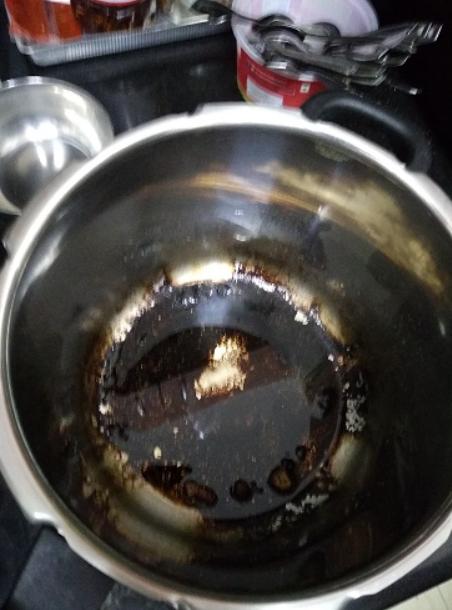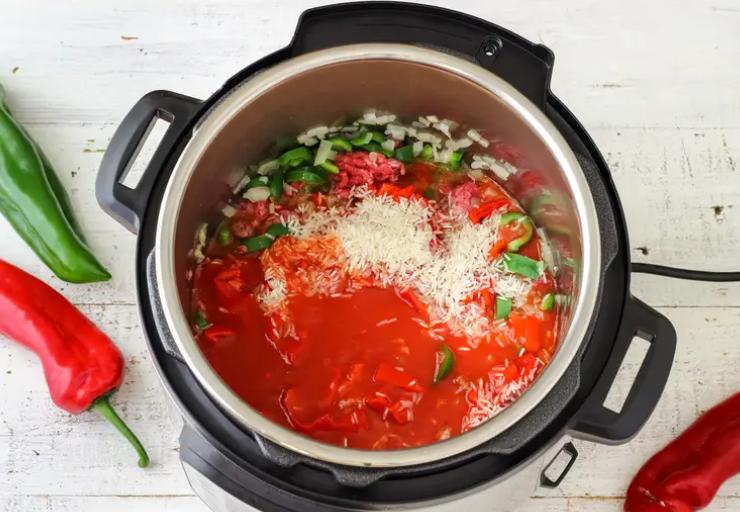Pressure cookers are indispensable kitchen gadgets, speeding up the cooking process and preserving nutrients. However, they can sometimes cause food to burn at the bottom, resulting in ruined dishes and challenging cleanups. To avoid this problem, it’s essential to understand why this happens and the correct methods to prevent it. This blog offers practical tips and step-by-step solutions to help you stop pressure your cooker from burning foods on the bottom, ensuring a seamless and stress-free cooking experience.

Why Does Food Burn at the Bottom of a Pressure Cooker?
Several factors can contribute to food burning at the bottom of a pressure cooker. Firstly, if the amount of liquid added isn’t sufficient, the cooker can overheat and burn the food. Secondly, food particles sitting too close to the heat source can quickly get scorched. Thirdly, improper layering of ingredients or using the wrong type of pot insert can lead to uneven heat distribution, causing some parts of the dish to burn.
Moreover, certain ingredients are more susceptible to burning. Foods with high sugar content can caramelize and stick to the bottom. Lack of regular stirring and high cooking pressure settings without adjustments can also result in burning. Understanding these issues can help in adopting preventive measures.
How to Stop Pressure Cooker Burning on Bottom: Step-by-Step Guide
Measure and Add Sufficient Liquid
To ensure the pressure cooker functions correctly, always add the recommended amount of liquid. Typically, one cup of water or broth is sufficient, depending on the recipe. This liquid creates the necessary steam to cook food evenly and prevents the food from sticking and burning at the bottom. Make sure to follow the specific guidelines for your pressure cooker model.
Use Appropriate Cookware and Inserts
Using the appropriate cookware can drastically reduce chances of burning. Opt for high-quality inserts designed for your specific pressure cooker. These inserts help distribute heat evenly, preventing hotspots. PIP (Pot-In-Pot) method can also be beneficial, where food is placed in a separate container inside the pressure cooker with a trivet and water at the bottom, avoiding direct contact with the heat source.
Layer Ingredients Properly
Layering ingredients correctly is vital. Add ingredients that take longer to cook at the bottom and quicker-cooking items on top. This method ensures even cooking and prevents bottom ingredients from burning due to prolonged heat exposure. Avoid overfilling the pot; leave ample space for steam to circulate, and stir the ingredients occasionally if the recipe allows.

What Should You Avoid When Using a Pressure Cooker?
Avoid using thick and pasty substances as the primary liquid; they do not create enough steam and can lead to burning. Refrain from adding dairy products directly into the cooker since they can curdle and stick to the bottom. Always avoid using a pressure cooker without sufficient liquid, as it can lead to overheating and damage the unit.
Do not ignore the manufacturer’s guidelines regarding pressure levels and cooking times. Each pressure cooker is different, so understanding your specific model’s requirements is essential to prevent burning. Additionally, do not open the pressure cooker prematurely; wait until the pressure has naturally released to avoid sudden pressure changes.
Best Practices to Prevent Food Sticking or Burning
Using non-stick or stainless-steel inserts can help reduce sticking. Stirring ingredients such as rice or beans occasionally can prevent sticking and ensure uniform cooking. Ensure thorough deglazing of the inner pot after sautéing ingredients to remove any stuck bits. This process adds flavor and prevents burning during pressure cooking.
You should also cycle high and low-pressure settings based on the food being cooked. This technique prevents consistent high heat exposure, reducing chances of burning. Regular maintenance and cleaning of the pressure cooker, especially the valves and seals, ensure proper functioning and heat distribution, preventing foods from burning and sticking.
Conclusion
Preventing food from burning at the bottom of a pressure cooker involves understanding the root causes and applying practical solutions. By ensuring sufficient liquid, using suitable cookware, proper layering, and following the manufacturer’s guidelines, you can enjoy hassle-free pressure cooking. Adopting these practices will lead to perfectly cooked dishes and a more enjoyable cooking experience.
FAQ
Can I use oil to prevent food from burning in a pressure cooker?
Yes, a small amount of oil can help reduce sticking and burning, especially when sautéing ingredients before pressure cooking. However, it should be used in conjunction with sufficient liquid.
Is it safe to use a pressure cooker without enough liquid?
No, using a pressure cooker without enough liquid can cause overheating, triggering the safety mechanisms, and potentially damaging the cooker. Always follow the minimum liquid requirements specified in your pressure cooker’s manual.
Why does my pressure cooker burn even with enough water?
If your pressure cooker burns food even with sufficient water, it could be due to high heat settings, improper layering, or using ingredients prone to burning. Check for any issues with the cooker’s heat settings or consider using a trivet or insert to raise food away from direct contact with the bottom.
